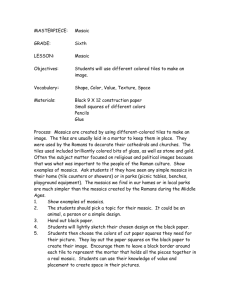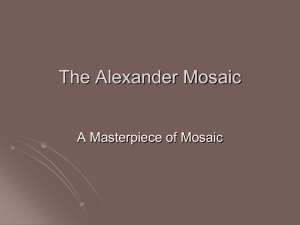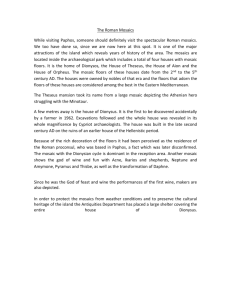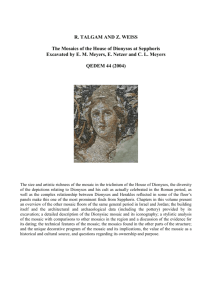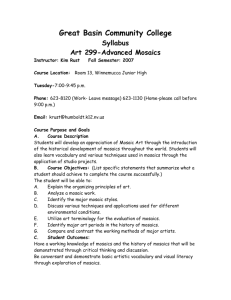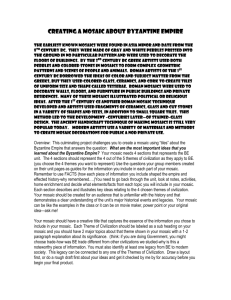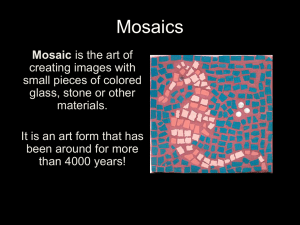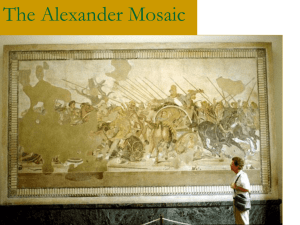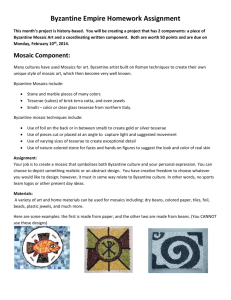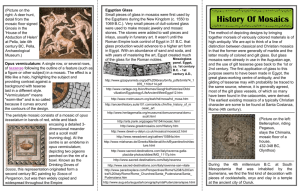Mosaic Tiling
advertisement
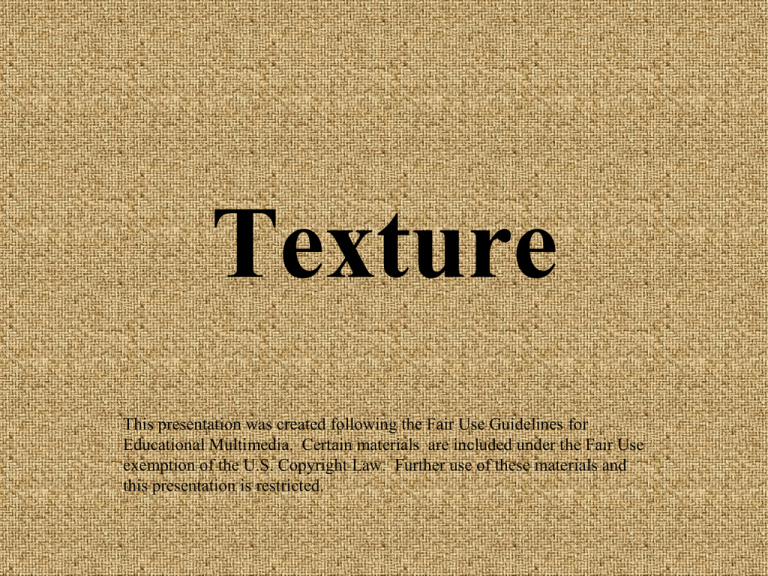
Texture This presentation was created following the Fair Use Guidelines for Educational Multimedia. Certain materials are included under the Fair Use exemption of the U.S. Copyright Law. Further use of these materials and this presentation is restricted. Actual Textures Occur in real objects that you can touch Sculpture Nature Painting Simulated Texture Texture in artwork that can be seen but not touched. The texture looks real in this painting, but the surface is smooth to the touch. Invented Texture Like simulated textures, but they are not intended to resemble textures you find in real life Mosaic is the art of decoration using tile, glass, or other material. An artist must piece together thousands of tesserae (the material used to mosaic) to complete the project. Mosaic tiling originated in Rome around the 4th century and was commonly found on church walls, ceilings, and floors depicting religious events. Mosaic depicting St. Demetrius of the Roman Catholic Church. David Ascalon 2002 Tusti, California Mosaics often took place of a painting technique called Fresco. This is where an artist paints tempera paint on wet plaster. The paint will stain the wall the desired hue. Tile mosaics proved to be far more durable and did not fade throughout the years. Also, since they do not lie on a flat plane, their shiny surface will reflect light in all directions. Michelangelo’s Sistine Chapel Arguably the worlds greatest fresco. It is located in a chapel in the Vatican City. Note the simplicity of both the composition and the individual figures. Why might an artist working in mosaic find it useful to avoid overly complicated designs? Direct Method People often think that mosaics are made by pressing the pieces of tile or stone (tesserae) into a background medium, such as cement. This is one possible way, but the most widely used technique is the direct method. With the direct method, the tiles are stuck firmly into place to a backing surface. When the adhesive has dried, grout is applied to the mosaic to fill in the gaps. Artists can use many different surfaces to display their mosaics. What will you choose? References Hobbs, Jack. Davis Publications, Inc. Worchester, Mass. 2005 yahoo.com/search/images?p=mosaic+tiling gallery.euroweb.hu/html/m/michelan/3sistina www.cosmotor.com http://www.istockphoto.com/imageindex/307/4/3 07417/Oil_paint_texture_I.html http://www.mmwindowtoart.com/3d/plas4.html

